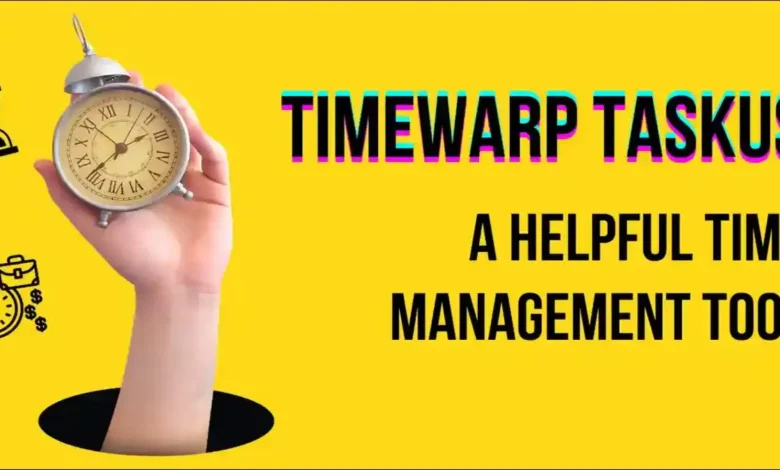Time Warp TaskUs: Exploring the Phenomenon and Its Impact on the Workforce1

Time Warp TaskUs In the fast-paced world of modern business, innovation, and new concepts are constantly reshaping industries. One such phenomenon that has captured the attention of both employees and employers alike is the Time Warp TaskUs. But what does this term mean? Why is it making waves across industries, particularly in the context of workforce management and the digital age? This article dives deep into the concept of Time Warp TaskUs, exploring its significance, how it works, and its long-term impact on the global workforce. Whether you’re a business leader, employee, or curious observer, this article will give you a comprehensive understanding of this intriguing trend.
Understanding Time Warp TaskUs
What Is Time Warp TaskUs?
The phrase Time Warp TaskUs refers to a concept or method used within the modern corporate and tech world, specifically relating to how businesses handle productivity and time management. It merges traditional work processes with a more innovative approach that allows companies to “warp” time in some sense, by manipulating work hours, boosting efficiency, or compressing tasks into shorter periods. Essentially, it revolves around creating optimal work schedules or workflows that maximize productivity in less time, almost as if time itself is bending to the demands of the business.
For TaskUs, a global outsourcing company known for offering exceptional services in customer experience and business process outsourcing, this concept may have particular relevance in their operational model. The idea is to push the boundaries of traditional work hours, encouraging flexibility, creativity, and speed, while still ensuring quality results. As businesses like TaskUs continue to grow, the integration of a “time warp” strategy could significantly alter how teams work across the globe.
How Time Warp TaskUs Affect Productivity
The core idea behind Time Warp TaskUs lies in its potential to impact productivity positively. By optimizing work schedules and offering more efficient ways to complete tasks, employees can achieve more in less time. This isn’t about rushing through tasks; instead, it’s about strategically allocating time for each activity, ensuring maximum output with the least amount of wasted effort.
In the case of TaskUs, employees might find themselves using advanced tools and systems that streamline workflows, automate repetitive tasks, or allow for more flexible working hours. Such strategies are designed to minimize distractions and create a “time-warped” environment where employees work smarter, not harder. This could result in faster response times for customers, more innovative solutions for clients, and a happier, more engaged workforce that feels more in control of their time.
How Time Warp TaskUs are Shaping the Future of Work
Shifting from Traditional Work Hours to Flexibility
Gone are the days when employees were expected to be in the office from nine to five, completing tasks in a rigid structure. The idea behind Time Warp TaskUs is to promote flexibility and adapt to the changing needs of a modern workforce. Instead of sticking to traditional office hours, TaskUs embraces a more flexible work culture, allowing employees to work in environments and at times that suit their lifestyle and preferences.
This shift is not only beneficial for employees, but it also offers considerable advantages for employers. With flexibility comes a greater ability to attract top talent, improve employee satisfaction, and increase retention rates. By offering employees more autonomy over their time, companies can foster a culture of trust and empowerment, which in turn can lead to greater overall productivity.
For TaskUs, this move could revolutionize how work is done globally, allowing teams to collaborate across time zones without the limitations imposed by strict office hours. Instead of adhering to a traditional 9 AM–5 PM framework, employees might engage in “time-warped” shifts that allow for better work-life balance and more effective use of their time.
Technological Advancements That Enable Time Warp TaskUs
One of the key drivers behind the Time Warp TaskUs phenomenon is technology. The tools and systems available today allow companies to rethink the way they approach time management, work processes, and productivity. TaskUs, with its tech-savvy infrastructure, is leading the way in adopting these innovations to maximize efficiency.
AI and machine learning, for example, can automate routine tasks and provide insights into workflow optimization, saving employees significant amounts of time. In addition, cloud-based collaboration tools like Slack, Asana, and Zoom enable teams to work seamlessly across the globe, breaking down the barriers created by time zones and geographical distance. TaskUs has fully embraced these technological solutions, which directly contribute to creating a “time-warped” working environment where tasks can be completed in record time.
Another significant advancement is the rise of data analytics. With the ability to track and analyze every aspect of a business’s workflow, TaskUs can continuously refine its processes to ensure that employees are working as efficiently as possible. By monitoring key performance indicators (KPIs) and other metrics, the company can make real-time adjustments to workflows, maximizing both employee and business productivity.
The Psychological Effects of Time Warp TaskUs
Mental Health and Work-Life Balance
While the concept of Time Warp TaskUs might sound like it’s all about efficiency and getting more done, it’s important to consider the psychological impact on employees. Flexible work schedules and the ability to “warp” time to suit personal needs can have a positive effect on mental health. Employees can enjoy more control over their work hours, reducing stress and improving their overall work-life balance.
However, there are potential downsides to this approach if not managed properly. The line between personal and professional time can blur, leading to burnout. As employees work more flexibly or “warp” their schedules, they may find themselves overworking or struggling to disconnect from their jobs. To combat this, TaskUs and similar companies must ensure that they implement proper guidelines and encourage employees to set boundaries around their work time.
Additionally, the psychological benefits of this system are enhanced by the trust that companies like Time Warp TaskUs place in their employees. By empowering workers with greater autonomy over their time, these companies foster a sense of ownership and responsibility, which can increase job satisfaction and motivation.

The Impact on Team Dynamics
While Time Warp TaskUs encourage individual productivity, it also has a profound effect on team dynamics. Flexible schedules and remote work options might initially seem like they could cause fragmentation, but when managed correctly, they can strengthen team collaboration. Employees from different parts of the world can work together seamlessly, without the constraints of traditional office hours, leading to more creative and diverse teams.
The key to making this work lies in fostering clear communication and creating a culture that values collaboration, regardless of time or location. TaskUs has implemented various tools and strategies to ensure that teams remain cohesive and productive, even when working in different time zones. By using digital platforms that allow for continuous communication and collaboration, teams can stay connected and work together efficiently, even if they are “time-warping” across different schedules.
The Business Case for Time Warp TaskUs
Increased Efficiency and Cost Savings
One of the most significant advantages of the Time Warp TaskUs strategy is its potential to increase business efficiency while reducing costs. By enabling employees to work in flexible, time-efficient ways, companies can optimize workflows and make the most of every minute. This is particularly valuable for outsourcing companies like TaskUs, which often juggle multiple projects for various clients.
In a traditional model, businesses might need to hire additional staff to handle fluctuations in workload or to ensure coverage during off-hours. However, with the time-warped model, employees can adapt their schedules to meet the company’s needs, reducing the need for additional resources. This creates cost savings for the business, which can then be reinvested into other areas, such as technology, employee training, or new services.
Moreover, the ability to create a more flexible workforce also allows companies to offer services around the clock. For TaskUs, this means providing 24/7 customer support or back-office services without the added expense of maintaining a large, traditional workforce. It’s a win-win situation that benefits both the business and its employees.
Scalability and Global Expansion
Another significant advantage of Time Warp TaskUs is its scalability. With flexible scheduling and the ability to work across different time zones, companies can expand their operations globally without the logistical challenges typically associated with managing large teams in different regions. TaskUs, for example, can expand its workforce across multiple countries, allowing it to serve clients in various regions without being constrained by the limitations of local office hours.
As businesses grow and expand globally, the ability to “warp” time zones and workflows to meet the demands of different markets becomes a powerful tool. This scalability is especially important in today’s interconnected world, where businesses are competing on a global scale. TaskUs can leverage this flexibility to offer high-quality services at any time of day, regardless of location.This introduction to Time Warp TaskUs explores the concept’s fundamentals, its effects on the workplace, and the technological innovations behind it. If you’re looking to expand this article further or delve into specific aspects, feel free to ask for additional sections or more focused content!



